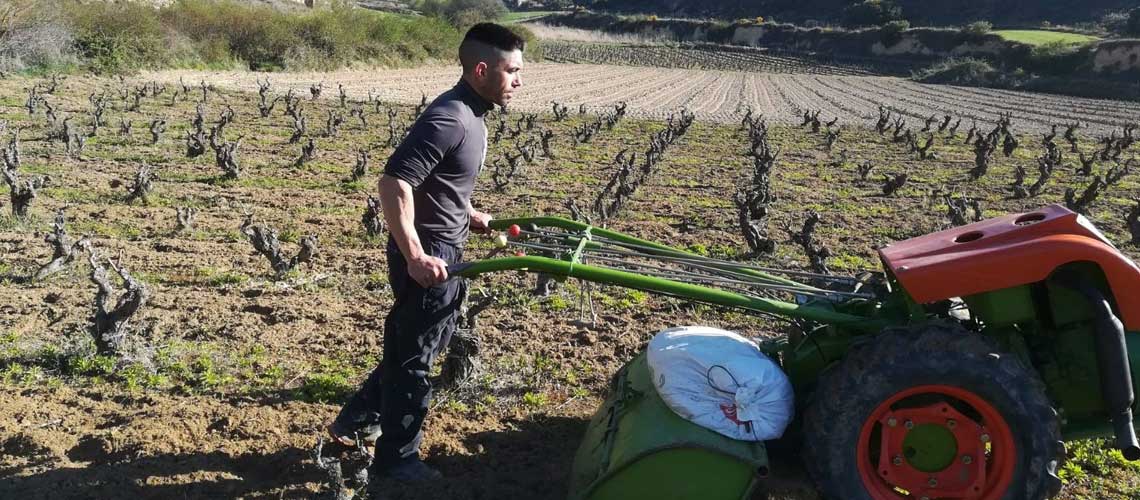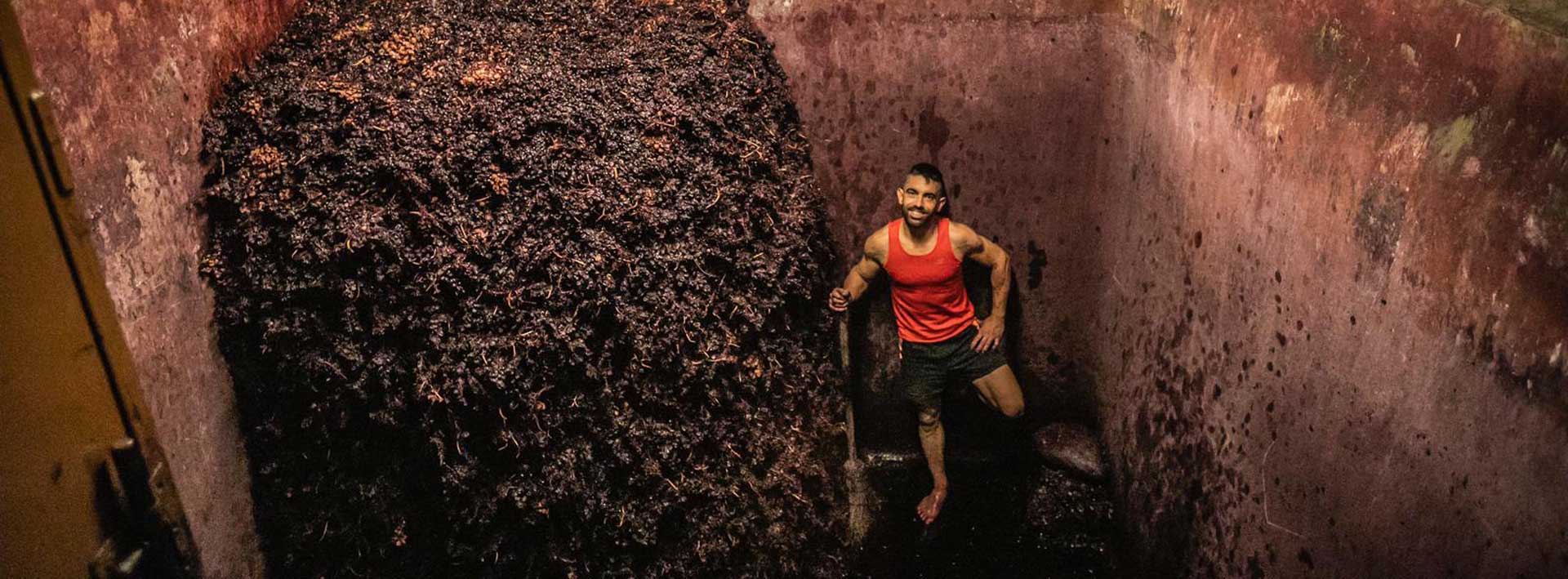Teodoro Ruiz Monge was one of the pioneering growers to make wines under his own brand in the 1970s in Rioja. Now, Itu, his son, has launched one of the most unique projects in the region as he produces varietal, single vineyard and aged wines using carbonic maceration as the only winemaking technique: "My wines are not made with the critics in mind. Some people seem to be afraid of carbonic maceration, and I would like to help dispel that fear. I guess that in the past it wasn't interesting to make it popular.”
Itu, whose name is José Luis Ruiz Bañares, makes an unoaked cosechero red called Monge Ruiz, and Zurbano Crianza, in the stone presses of the original 1872 winery, where the grapes are stomped, turned with a pitchfork and the musts are extracted by gravity before being left to settle in the concrete tanks. He uses his family's traditional 'recipe': Tempranillo, with 5% Viura and 10% Garnacha: "The blend came directly from the vineyard —time has proven that we still have a great deal to learn from our grandparents.”

Zortún, a peculiar and very interesting white wine from the almost extinct Turruntés variety; Isabel Bañares; La Pacha, a very limited release from a small pre-phylloxera vineyard; and Desniete, an old vine Garnacha, are his present collection of single vineyards which he makes in the new winery: "The method is the same and, once the wines have fermented, we move them to barrels where they undergo malolactic fermentation.”
Itu, who emphasises the "differential freshness and fruit", as well as the greater silky palate that carbonic maceration lends, also challenges the myths about its alleged limitations for ageing: "We will see in a few years, but my wines are made to be long-lasting; if the vineyard is farmed properly, the wine will be good; once in the cellar, it is a matter of taste. If I can contribute to the preservation of an artisanal winemaking tradition, I will be satisfied.” The winemaker has restored, with his own hands, one of the caves of the impressive Castillo de San Vicente, which he has opened to wine tourism, so a tour of the bodega is highly recommended.


